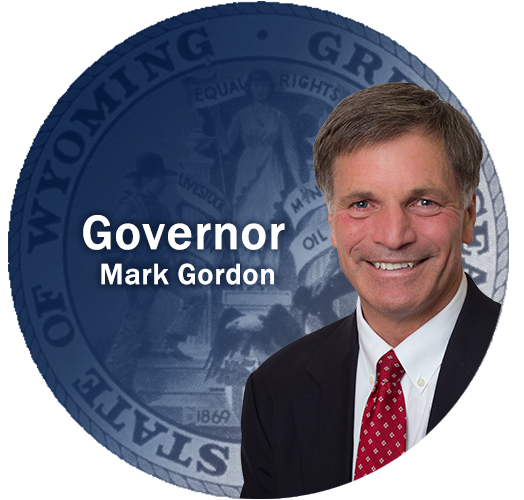
About - FORT FETTERMAN
Description:
Fort Fetterman is open to the public during the summer. A restored officers’ quarters and an ordnance warehouse have interpretive exhibits and artifacts of the fort’s history, Fetterman City and its Indian predecessors. You are encouraged to walk the grounds where interpretive signs describe the fort’s buildings and activities.
History:
IN THE BEGINNING
The fort was established as a military post on July 19, 1867 because of conditions that existed on the Northern Plains at the close of the Civil War. Civilization was advancing across the frontier along the line of the Union Pacific Railroad, and the fort was needed as a major supply point for the army operation against the Indians. On July 31, 1867, the post was named Fort Fetterman in honor of Captain William J. Fetterman, who was killed in a fight with Indians near Fort Phil Kearny, December 21, 1866.
Major William McEntire Dye, with Companies A, C, H, and I, 4th Infantry, was assigned to build the post. In a letter to the Adjunct General, Major Dye described the post and surrounding country as “... situated on a plateau...above the valley of the Platte, being neither so low as to be seriously affected by the rains or snow; nor so high and unprotected as to suffer from the winter winds.”
LIFE AT THE FORT
Unfortunately, Major Dye’s optimistic view of the site did not hold true for winter months.
In November of 1867, Brigadier General H.W. Wessells became commanding officer at the fort. According to his report to the Department of the Platte, …” officers and men were found under canvas exposed on a bleak plain to violent and almost constant gales and very uncomfortable…”
The garrison managed to get through the winter and the fort continued to grow and develop. By 1870, it was well established and destined to play a conspicuous part in the Indian wars for the next few years. Jim Bridger, Wild Bill Hickock, Calamity Jane and “Buffalo Bill” Cody were among the colorful personalities of the time whose activities and travels took them to Fort Fetterman.
In accordance with the Treaty of 1868, Forts Reno, Phil Kearny and C.F. Smith, (along the Bozeman Trail) were abandoned. Fort Fetterman alone remained on the fringe of the disputed area. As an outpost of civilization on the Western frontier, the fort represented protection and was a haven to travelers.
Fort Fetterman was always considered a hardship post by officers and men stationed there. On May 18, 1874, Captain F. Van Vliet, of Company C, 3rd Cavalry, felt so strongly about the hardships on his men that he wrote to the Adjutant General requesting his company be transferred because there was…”no opportunity for procuring fresh vegetables, and gardens are failure. There is no female society for enlisted men...the enlisted men of the company are leaving very much dissatisfied, as they look upon being held so long at this post as an unmerited punishment...whenever men get to the railroad there are some desertions caused by dread of returning to the post…”
Desertions were common, and the post frequently lacked adequate supplies and equipment.
Supplies had to be hauled from Fort Laramie to the southeast or from Medicine Bow Station on the Union Pacific Railroad. Luxuries were scarce and pleasures few. However, the soldiers found some diversions from the garrison life at a nearby establishment known as the “Hog Ranch.”
During the mid-1870s, Fort Fetterman reached its pinnacle of importance when it became the jumping-off place for several major military expeditions. It was the base for the three of General George Cook’s Powder River Expeditions and Colonel Ronald Mackenzie’s campaign against Dull Knife and the Cheyenne Indians. These events contributed to the end of the resistance by the Plains Indians.
AFTER THE FORT
When the military abandoned the fort in 1882, activity in the area did not immediately cease. The town of Fetterman took root, and it soon grew into a notoriously rowdy frontier town. While short-lived, the town of Fetterman, or Fetterman City as it was also called, was more than a footnote in the history of the area. For a time, Fetterman was the social center and a supply point for cattlemen and ranchers, who by this time, were thriving in the region. Novelist Owen Wister recounted these times in his books “Lin McLean” and “The Virginian”- widely regarded as the first cowboy novel. His fictional town of Drybone was based on Fetterman City.
The boom was short-lived, however, and in 1886, the town of Douglas was founded a short distance to the southeast with the coming of the railroad. The old fort, in a state of decay, lost out as a town and declined rapidly. Most of the buildings were sold, dismantled or moved to other locations.
 |
Site Status |
||||||||
Ft. Fetterman State Historic Site is open seasonally. We are now officially closed for the 2024 season (Memorial Day thru Labor Day). See you in 2025! Check our Facebook page for up to date events for the summer of 2025. You may also contact site Superintendent, Jenna Thorburn at 307-358-9288 or email at This email address is being protected from spambots. You need JavaScript enabled to view it. |
|||||||||
 |
Hours |
||||||||
Please Note that this site is open seasonally only (Memorial Day Weekednthru Labor Day Weekend) For the 2025 season the Fort will be open from: May 23rd thru August 30th Tuesday - Saturday, 9 a.m. - 5 p.m.
|




































































